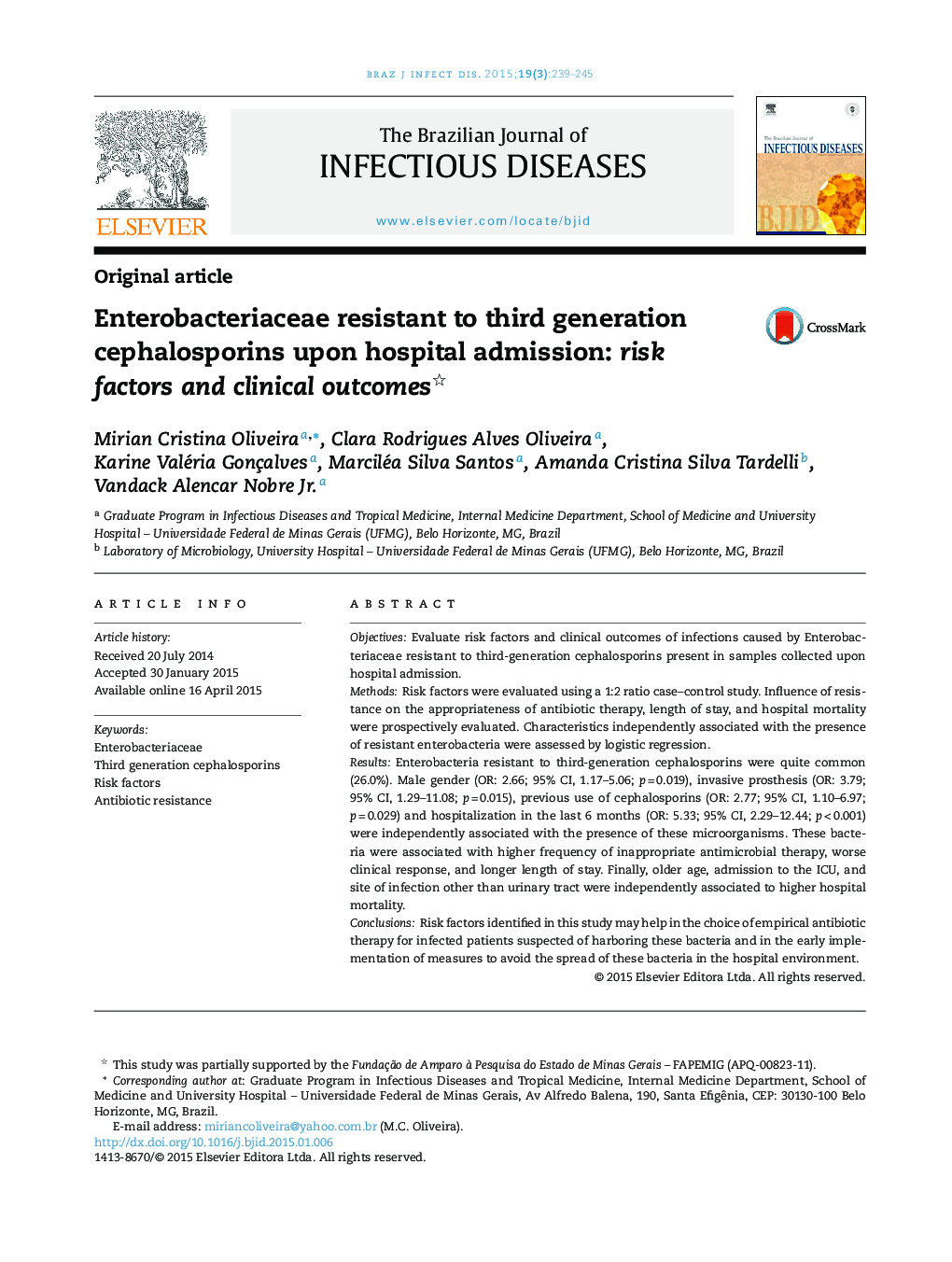| Article ID | Journal | Published Year | Pages | File Type |
|---|---|---|---|---|
| 3343777 | The Brazilian Journal of Infectious Diseases | 2015 | 7 Pages |
ObjectivesEvaluate risk factors and clinical outcomes of infections caused by Enterobacteriaceae resistant to third-generation cephalosporins present in samples collected upon hospital admission.MethodsRisk factors were evaluated using a 1:2 ratio case–control study. Influence of resistance on the appropriateness of antibiotic therapy, length of stay, and hospital mortality were prospectively evaluated. Characteristics independently associated with the presence of resistant enterobacteria were assessed by logistic regression.ResultsEnterobacteria resistant to third-generation cephalosporins were quite common (26.0%). Male gender (OR: 2.66; 95% CI, 1.17–5.06; p = 0.019), invasive prosthesis (OR: 3.79; 95% CI, 1.29–11.08; p = 0.015), previous use of cephalosporins (OR: 2.77; 95% CI, 1.10–6.97; p = 0.029) and hospitalization in the last 6 months (OR: 5.33; 95% CI, 2.29–12.44; p < 0.001) were independently associated with the presence of these microorganisms. These bacteria were associated with higher frequency of inappropriate antimicrobial therapy, worse clinical response, and longer length of stay. Finally, older age, admission to the ICU, and site of infection other than urinary tract were independently associated to higher hospital mortality.ConclusionsRisk factors identified in this study may help in the choice of empirical antibiotic therapy for infected patients suspected of harboring these bacteria and in the early implementation of measures to avoid the spread of these bacteria in the hospital environment.
